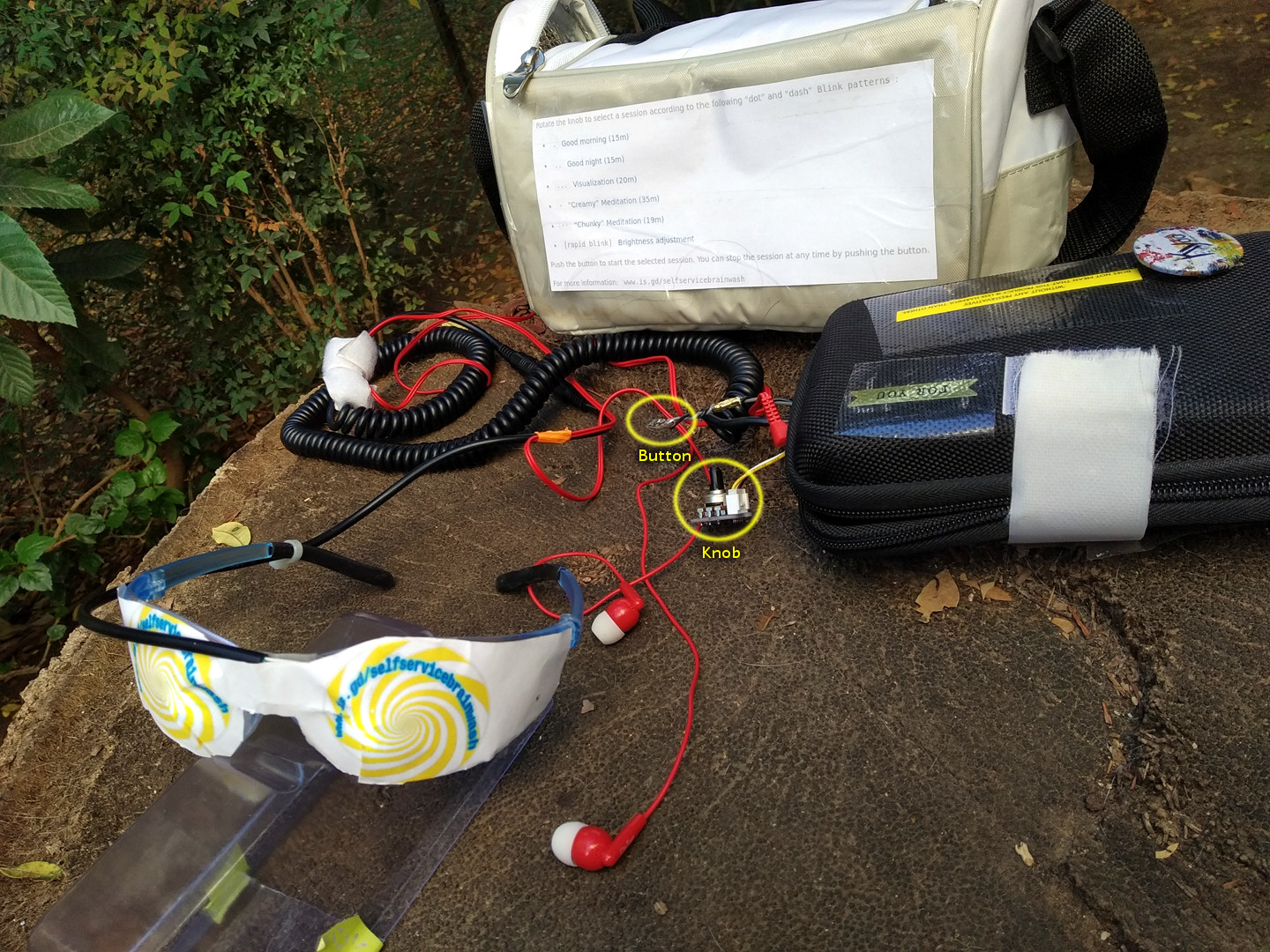For usage instructions and useful brainwave-entrainment related links, see the wiki.
-
The machine can now run 5 different sessions (including the original one). Except for the the original session that uses frequency hopping for brainwave entrainment (aka the "chunky" method), the other 4 use smooth frequency transition (aka the "creamy" method), and are based on Mindplace Proteus sessions (thanks to the admins and members of the mindplace support forum for all the attention and knowledge). There's a 10㏀ potentiometer on pi A0 that is used to select the session.
-
Pin 2 (that used to be the "wake up button") now has 3 functions (depending on state): start / stop / wake (from sleep mode), and the button's interrupt is always attached (not only during sleep mode).
-
More serial debug prints (note that all serial related code is now inside
#ifdef DEBUGblocks).
Note: you should download Bhagman's Tone library here.
See Arduino_Brain_Machine_Mono/ folder for code, and arduino-brain-machine-mono* for schematics.
Repository: Brain Machine for Arduino
Attribution: Chris Sparnicht - Laughter on Water - http://low.li
Creation Date: 2011.01.31
Last Modification Date: 2011.02.15
License: Creative Commons 2.5 Attrib. & Share Alike
Derivation and Notes:
Make sure you have dual wheel potentiometer to reduce
the volume of the audio with your headset. If you don't,
you might damage your ear drums, your arduino or your headset.
Add a 4.7K ohm resistor from each tone pin to each volume-in
on the potentiometer to further reduce possibility of physical harm.
This arduino sketch is based on the original Sound & Light Machine
by - Mitch Altman - 19-Mar-07 as featured in Make Magazine 10.
http://makezine.com/10/brainwave/
See notes in code below for how I adapted Mitch Altman's version for Arduino
The sleep coding comes partially from here:
http://www.arduino.cc/playground/Learning/ArduinoSleepCode
***************************************************
2011.02.20
Fixed error in breadboard diagram.
Added new longer show and gamma frequency (40.4Hz).
2011.02.15
Added liability notice.
2011.02.14
Changed to switch/case format for stage choices.
2011.02.14
Added functions for alternating LED blinking for
each of the four stages. So now, there are
eight cases: b, B, a, A, t, T, d, and D.
2011.02.14
I've included a Stereo Eyephone Test sketch
and a Stereo Tone Test Sketch. These sketches are purely
for development purposes, used to confirm preferred programming
prior to putting it into the Arduino Brain Machine Sketch.
If you're having trouble with Eyephones or Earphones, try
isolating the cause using one of these simpler sketches.
***************************************************
LIABILITY NOTICE:
***************************************************
Light and Sound Machines can be fun for many of us,
but may be seriously dangerous for those prone to siezures.
When in doubt, seek medical attention.
You assume all liability for any damage
done to your own health, those to whom you expose this
technology and/or to your equipment when using any notes
sketches or any associated files within this Git repository.
USE AT YOUR OWN RISK.

